Five Super Simple, Amazingly Effective,
Vocation-Themed Youth Ministry Meetings
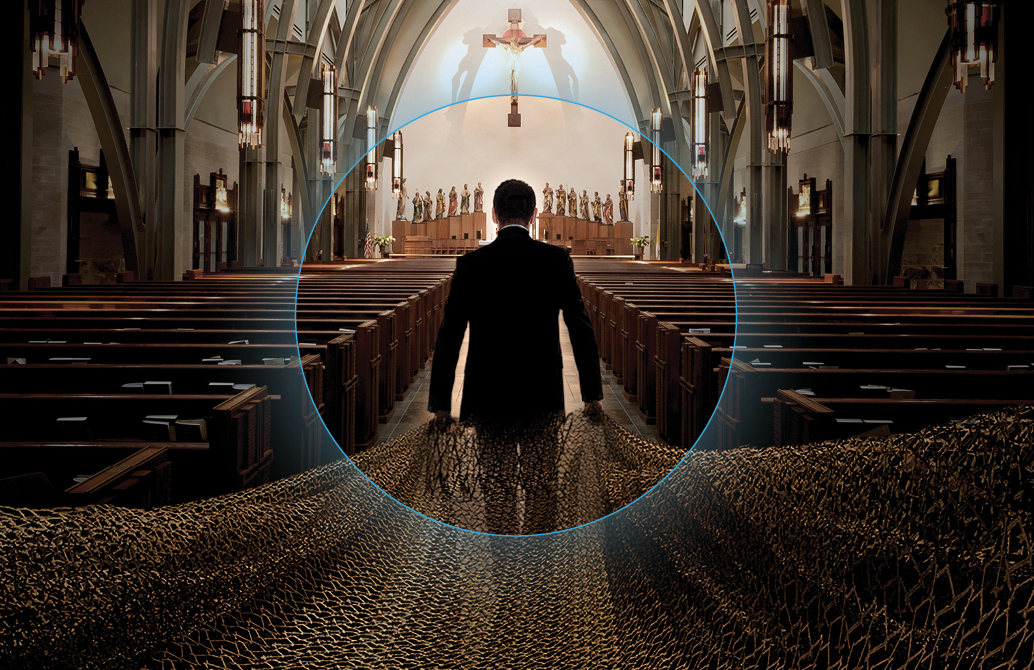
Fishers of Men is a powerful 17-minute film about the priesthood. It provides an excellent springboard for talking about priestly vocations, discernment, and our Catholic faith.
Film Night: Fishers Of Men
BASIC IDEA: Show the 17-minute film Fishers of Men, then ask a priest to answer questions after the film.
Tips for a Good Meeting
• Be sure you have a good audio-visual setup. Crank up the volume, as the soundtrack is super powerful.
• Invite your parish priest, or perhaps a priest from across town.
• Give everyone paper & pen before the movie. When it ends, ask teens to write down questions (to allow for anonymity), then give the papers to the priest. He can shuffle through and answer. Allow follow-up questions to flow naturally.
• If no teen brings it up, be sure to ask father to tell his vocation story.
• End by asking the priest to offer advice on discerning one’s vocation, then give a blessing to the teens.
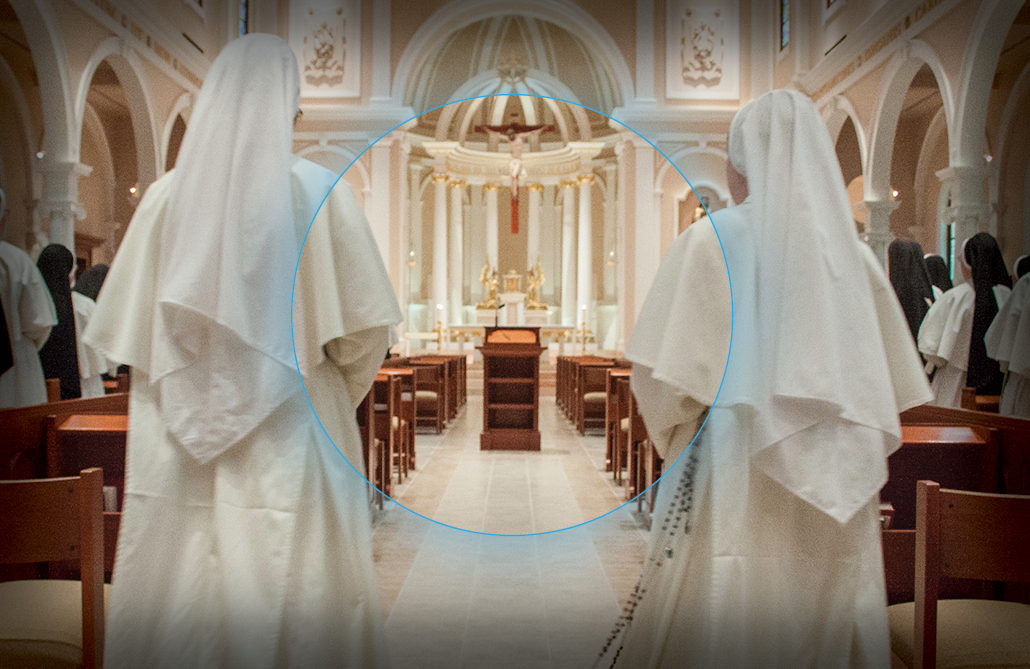
For Love Alone is an amazing 17-minute film that shows the beauty of women’s religious life. It is excellent viewing for both girls and guys, and provokes great discussion.
Film Night: For Love Alone
BASIC IDEA: Show the 17-minute film For Love Alone, then ask someone to answer questions after the film, preferably a religious sister.
Tips for a Good Meeting
• Show on the biggest screen available.
• If possible, invite a religious sister to attend. If not, ask a priest or religious brother.
• Use the same paper-and-pen method suggested for Fishers of Men. Another way to open discussion is to ask, “What stereotypes did you have about sisters, and how did the film change your view?”
• Important: be sure the boys understand that men can be called to religious life also!
• Ask sister to tell her vocation story and offer advice on discerning a vocation.
• There’s a set of discussion questions for the film at forlovealone.net.
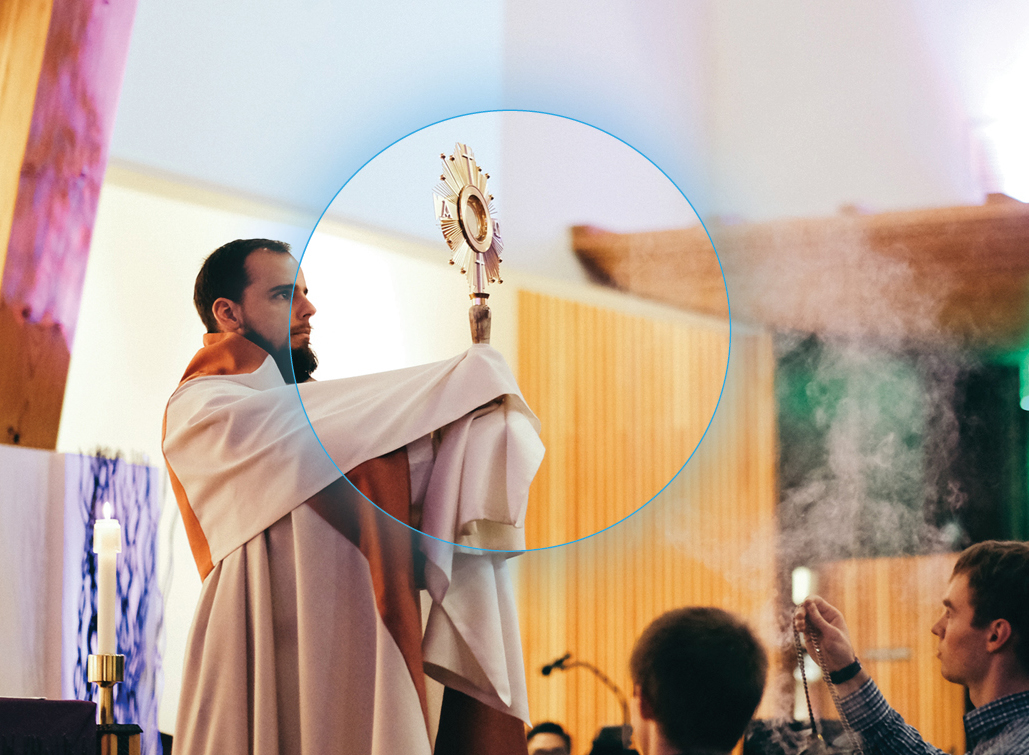
Discernment Holy Hour
BASIC IDEA: Hold a guided Holy Hour to help teenagers open their hearts to Jesus and listen for His voice.
Advice for the Holy Hour
• Prep teens before the Holy Hour begins, especially if the devotion is unfamiliar to them.
• Plan good music to set a prayerful mood.
• Teens can handle a full hour, particularly if you give them 2-3 meditations followed by silent prayer.
• Invite teens to speak with Jesus heart-to-heart about the possibility of priesthood or religious life.
End with a Vocation Litany such as the one at www.invisiblemonastery.com.
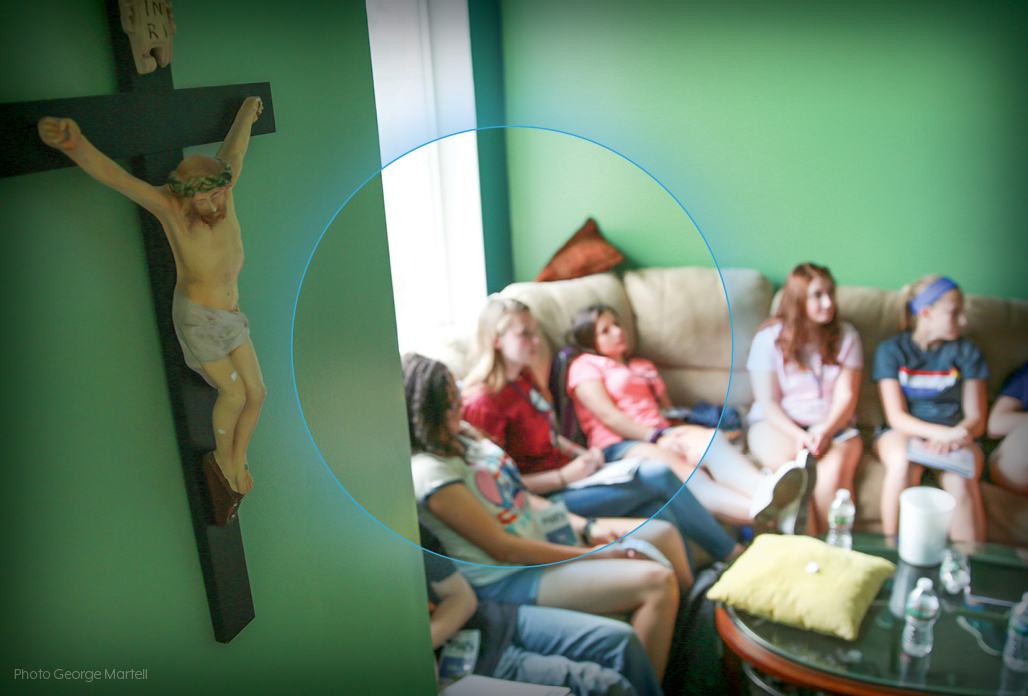
Small groups work, meaning they are extremely effective at helping young people deepen their faith. Consider starting small groups solely focused on vocation discernment. It’s normally best to do one group for guys and one for girls.
If your group seems too small, partner with other parishes in your area.
Discernment Groups
Basic idea: Meet regularly with a small group of guys who want to discern the priesthood or religious life, or girls who want to explore consecrated life.
About Discernment Groups
• A few teens in your parish may want to go deeper. Discernment groups provide support as they explore their vocations.
• You don’t have to re-invent the wheel. Excellent discernment group materials already exist:
• As much as possible, try to get your parish priest or a local sister to be present at the group meetings.
• Consider meeting before or after your regular youth group meeting times.
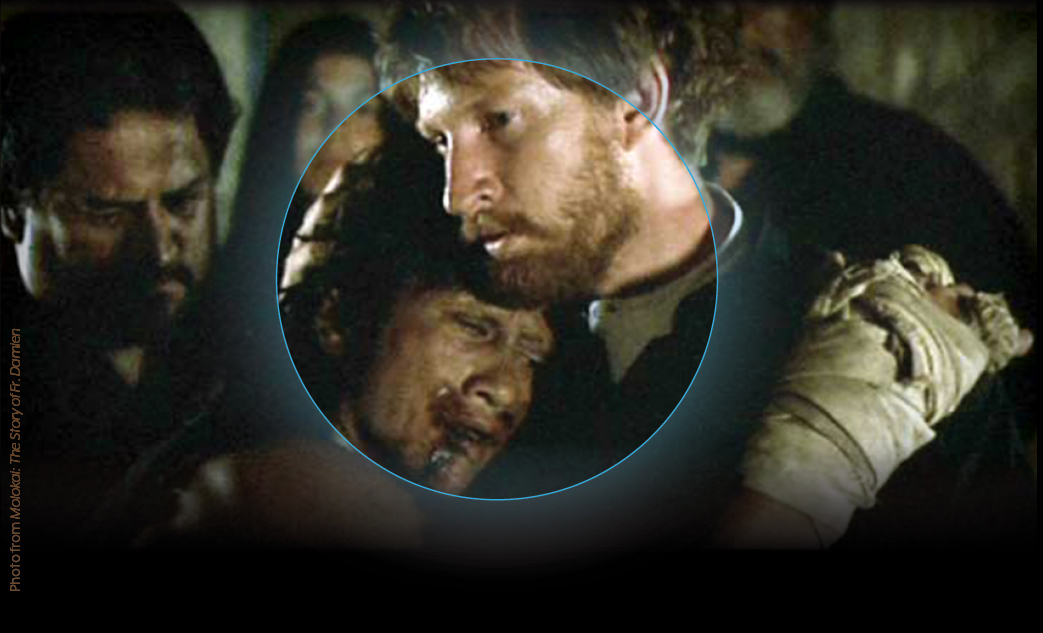
Bonus activity: Ask teens to imagine their own path to sainthood, then share the imaginary events leading to their canonization in the year 2080. You’ll get some silly answers but you’ll also get insight into what teens believe true holiness entails.
Saint Stories
Basic idea: Tell dramatic stories of famous and little-known saints in different vocations, followed by discussion.
Telling stories of saints is a simple but powerful way to inspire teens to heroic virtue. It’s best to tell stories that are dramatic and detailed. Don’t just tell the “outline” of the story–do some research, find interesting details, then tell the whole thing. The better the story, the better the discussion that follows. Below are several stories to use. These are best told in your own words, but the longer ones can be read aloud.
If you can use only one story, the tale of Sts. Hadrian and Natalia (below) is probably best for teens, as it is the least known and also the most dramatic (and romantic).
5 Stories of Saints in Different Vocations
St. Damien of Molokai (1840-1889)
In those days there was no cure for the deadly disease of leprosy, nor were the disease and its causes well understood. Many people thought it was possibly a sexually transmitted disease. The Hawaiian Government dealt with the disease by permanently exiling anyone infected to the island of Molokai. Although the Bishop knew the island of Molokai desperately needed priests, he was worried about asking priests to go to a place which would surely kill them. Fr. Damien was one of four volunteers and the first to go.
Where there was sickness, he brought comfort. Where there was no law, he brought order. He built a hospital and a church; he blessed marriages, heard confessions, and offered mass. He got members of the Sisters of Saint Francis of Syracuse, New York, led by Bl. Marianne Cope, to come and nurse the sick.
When Fr. Damien finally caught leprosy, he not only had to endure the disease itself, but even false accusations that he must have caught the disease through sexually abusing the exiles. Some assumed the worst, but others knew that Fr. Damien had never broken his vows. They knew he had, in fact, lived a life of heroic virtue. They knew they were in the presence of greatness.
When Fr. Damien died in April, he had valiantly served the lepers of Molokai for 16 years.
St. Maria Goretti (1890-1902)
When Maria was younger she was remembered for being responsible in her chores, always ready to share or even give away her treats to her siblings, and for being so overjoyed at her First Communion, that the priest allowed her to receive more frequently than was usually allowed in that era.
One day, when Maria was twelve, while she was babysitting, Alessandro attacked her. He tried to rape her. She resisted his attack, screaming that God would never want him to do such a terrible thing. Alessandro was unable to overpower her; he ended by stabbing her 11 times with a nine-and-a-half inch knife and leaving her for dead.
The story is truly terrible. Maria was dragging herself to the door to call for help. Alessandro heard her, returned and stabbed her three more times to finish her off. Maria’s screams this time finally attracted the attention of the family off working in the fields.
It took Maria twenty-four hours to die and she couldn’t have a drink of water because her internal injuries were so bad. As a minor, Alessandro was sentenced to 30 years in prison. For the first eight years in prison he wasn’t sorry at all. But then he had a dream of Maria, who came to him with lilies in her arms. She told him, “Alessandro, as I have promised, your soul shall someday reach me in heaven.”
Alessandro became a model prisoner. He was released three years early, shortly before 1929. In 1937 Alessandro went to beg forgiveness from Maria’s mother. They went to Mass together that night; it was Christmas. Alessandro was asked to give testimony when Maria’s cause for canonization was begun. In the time that had passed more than forty miracles had been credited to her intercession. Both Maria’s mother and Alessandro were there for Maria’s canonization in 1950.
St. Philip Howard (1557- 1595)
Philip Howard was baptized Catholic, but his family later decided to join the Church of England. While Philip was still young, his mother died and his father remarried a widow who had a daughter named Anne. When Philip grew up, he married Anne. Although she was devoted to him, Philip cheated on her, at one point left her, and generally failed to practice any kind of religion.
One day, Philip witnessed a brilliant debate between Fr. Edmund Campion, S.J. and some other scholars over issues of the Catholic Faith. Fr. Campion, a gifted scholar, had been imprisoned for his faith. He would eventually be executed by being hung, drawn, and quartered, simply for being a priest.
(Catholics were under a severe persecution from the protestant churches in England during this period. Catholicism was illegal. Refusing to attend Anglican services would result in huge fines. Many Catholics had their property taken unless they renounced the Faith; many were tortured and killed, especially priests, when they were discovered practicing the Faith.)
Over the next three years, Philip thought more and more about returning to the Catholic Faith. Finally he decided. His wife Anne converted just before he did. Converting sparked a new love between them. Philip and Anne fell deeply in love and conceived their first and only son. Philip, though, would never be able to see this child.
After their conversion, they were discovered to be practicing the Catholic Faith, and both were placed under house arrest. Anne lived more than a year under house arrest. When Philip was placed under house arrest, he attempted to flee, but was betrayed, caught, and imprisoned.
Philip Howard lived under threat of death for the next ten years in the Tower of London. He was forbidden to see his wife or their child, whom she bore shortly after his imprisonment, unless he agreed to attend an Anglican service. Anne absolutely supported Philip in his refusal. Philip eventually contracted a disease and died alone.
On the wall of the prison, it is said he scratched these words in Latin: “Quanto plus afflictiones pro Christo in hoc saeculo, tanto plus gloriae cum Christo in futuro,” which, translated into English, means “The more affliction we endure for Christ in this world, the more glory we shall obtain with Christ in the next.”
Philip Howard was canonized by Pope Paul VI in 1970. His wife Anne would go on to found a Jesuit House and support many priests in their clandestine work for God in England.
Cristero Families Support Priests and Religious (c. 1920s)
At great personal risk, families sheltered priests and religious. One religious order, the Carmelite Sisters of the Sacred Heart, tells how novices fled under bullet-fire to shelter with their superior Mother Luisita. Twenty sisters, along with vestments and vessels for mass, were hidden in a tiny space behind a door covered with straw. When soldiers entered the house looking for feed for the animals, Mother Luisita told the sisters to make an examination of conscience and prepare for the worst: “If they find us,” she said, “They will surely kill us. . . . Place yourself in the hands of God.”
They could hear the owner of the house arguing with the soldiers. Then silence. Whatever the man said, he had convinced the soldiers to leave! [7] This was one of hundreds of anonymous families that sheltered the sisters in the coming years and made possible their work of caring for the sick and orphaned.
A bishop of Lubbock, TX was a son of one brave Cristero family. When some Catholics rose up to fight the new anti-Catholic laws, these “Cristero” fighters were helped by families like his. Bishop Plácido Rodriguez tells how his parents Eutímio Rodríguez Cárdenas and Maria Concepción Rosiles de Rodríguez supported the Catholic religion and fostered his own vocation. In an interview, [8] Bishop Rodriguez says:
“All I remember is my mother, Maria Concepción Rosiles de Rodríguez, telling me of her participation with the Feminine Brigades, and passing through the tough security of the Mexican army, without suspecting that these valiant women were carrying ammunition.
“My mother in the year 1927 was 22 years old . . . 25 years later she would share with me how scared she was when they crossed the enemy line of government forces. Once they crossed this critical point, they felt more secure and delivered the ammunition to the Cristeros.”
He was asked, “What do you wish you could tell everyone about your mother?”
Bishop Rodriguez responded, “My mother contributed and participated in the Feminine Brigades (BB); she maintained the family together and supported my father in his underground mission of protecting and hiding both priests and bishops during the persecution.
“I would also like to tell everyone about my father, Don Eutímio Rodríguez Cárdenas, that he dedicated his life and money to the cause of Christ the King in the defense of the Catholic Church; protected the Church property and sacred vessels, would read the Mass prayers as if it were the Mass, because the faithful would gather on Sunday for prayer. He would run the risk of being confused with, or taken for, a priest, and be executed. He would organize and conduct “field Masses” in the rural areas of Celaya or other small towns. These were very dangerous undertakings in which, on one occasion, three leaders were killed by the government forces. He conducted and led the burials of these three fellow Cristeros; while in procession to the cemetery, the government forces fired upon a peaceful procession and more pilgrims were killed. My father received only one abrasion with a bullet on a leg.”
Bishop Rodriguez goes on to tell how his father avoided even an assassination attempt. The Feminine Brigades of St. Joan of Arc comprised more than 20,000 women who secretly ran ammunition, information, food and medical supplies, while sheltering priests and religious in secret.
Sts. Hadrian and Natalia (c. 306)
Natalia was a secret Christian during the Diocletian persecution. Her husband, Hadrian, was a non-Christian and a soldier in the Herculian Guard (bodyguard) of the emperor Galerius Maximian. One day he was overseeing the torture and execution of some Christians. He was amazed by their courage, and asked them what they hoped to gain by such suffering. They told him, “eye has not seen nor has ear heard what things God has prepared for those who love him.” [5] Hadrian was struck to the heart; he announced then and there that he, too, wanted to become Christian. He was immediately imprisoned.
When Nathalia heard the news, she was overwhelmed partly by sorrow at his imprisonment, but mostly with joy at his conversion. She had never expected this! It can be very hard for someone not to be able to share the Catholic Faith and love of God with a spouse. Nathalia went to visit Hadrian in jail and told him her secret, and how proud and happy she was about his conversion. She encouraged him to stay strong.
When it came time for Hadrian to be executed, he was permitted to return home under house arrest to say goodbye to his wife. A servant ran ahead to tell Natalia that Hadrian was coming, but she could not think why he would be returning except that he had renounced his conversion. She began to weep with sadness; and when Hadrian came, she was so disappointed, she actually locked the door. He was pretty shocked, crying out, “Natalia, what are you doing this for?”
Natalia said, “How could you give up so much good? What did I do to deserve being married to a traitor?” When Hadrian realized what Natalia was thinking, it was almost kind of funny—and he had to explain to her. In fact, he had to explain to her several times; she didn’t believe him at first. “No, Natalia, I’m going to my execution!”
“Go away,” she said, “I want to die!” And he kept trying to convince her (through the door!) until finally he said, “Woman, you better let me in, because this is the last time you’re going to see me!” Then Natalia realized what was really going on. With surprise, tears, embarrassment, apology, tenderness—she opened the door to him, embraced him, and kissed him. It is hard to describe this parting. Never had she loved him so much, though her love was about to see greater trials.
Hadrian returned to prison and a terrible period of daily torture began for him and his companions. Natalia nursed him every day. Daily the prisoners were racked and beaten, and asked if they would renounce their faith. But Hadrian held strong and Natalia kept encouraging him.
On the 7th day, Hadrian was beaten so badly that “his bowels spilled out.” (Medical conditions do exist like this; if someone is beaten too badly, the muscles which support the internal organs will not function any more—the body starts to disintegrate. This is a truly painful and horrific condition.)
The story also preserves for us that Hadrian was about 28 at that time. He had been a handsome man, active and physically fit. Now consider him, unable to walk, his body falling apart, his face disfigured. He had been a soldier, one of the highest and closest to the emperor, a dependable and trustworthy man with a stable career before him, respected by the most powerful empire the world had ever seen. Now he was lying in a heap on the floor, a cripple who could not even feed himself.
Natalia got down on the ground, and put her hand under his head, whispering, “Blessed are you. You are my lord. My light. My sweet. God take you now, and deliver you from your sufferings.”
Natalia was the only consolation Hadrian had in that hell. When the authorities realized that the wives of the prisoners were visiting, this was immediately forbidden. Natalia was totally devastated.
Picture her being roughly escorted out of the prison. Picture her thinking, “I will never see Hadrian again. What will happen to him? How will he stay strong to the end?” Picture her passing by and suddenly noticing a young slave boy. He is on his way to take food and water to the prisoners. She sees the slave boy’s shaved head and baggy loose clothing.
Natalia got an idea. It began with a disguise. She dressed herself in baggy clothes and shaved her head. She began to visit the prison, passing herself off as one of the slave boy workers. Soon other wives were joining her, disguising themselves to care for the prisoners. We don’t know how long Natalia did this dangerous thing, bringing food, water, healing and her deep love to Hadrian. You can imagine how each time Natalia had to pass through the checkpoints her heart must have been pounding.
According to the story, this request was the last thing Natalia said to her husband: “When you go, pray for me, that I be safe from evil, and ask God to let you call me to come and join you as soon as possible.”
Soon after, Natalia was discovered; she and some of the other women were hauled before the court and their husbands dragged out to be killed once and for all. The authorities were extremely angry at Natalia’s disguise, so they did not choose a method of death that was quick and painless. The women’s punishment was to watch their husbands die. They were not allowed to speak to their husbands.
Natalia watched as guards broke her husband’s legs and then tossed him into a fire. She tried to follow Hadrian, but the guards held her back.
Though she was still young, Natalia never remarried. She used to dream about Hadrian and beg him to call her home. A few years after Hadrian’s death, a government official begged Natalia to marry him, but she refused. When he tried to force her to accept, she fled with some fellow Christians, taking her husband’s remains to bury in a church at Constantinople.
On the voyage to Constantinople, a terrible storm came upon their ship. In a dream, Natalia saw Hadrian saving them and telling her it would not be long. They remained safe in the storm, and arrived in Constantinople. She buried Hadrian’s remains properly, and soon after, Natalia had another dream. Hadrian was well and handsome again and told her it was time to join him in “eternal peace.” She told friends about this dream, and the morning, they found that she had quietly passed away.
The Church reveres this heroic couple, and celebrates St. Hadrian and his Companions’ feast on September 8.
